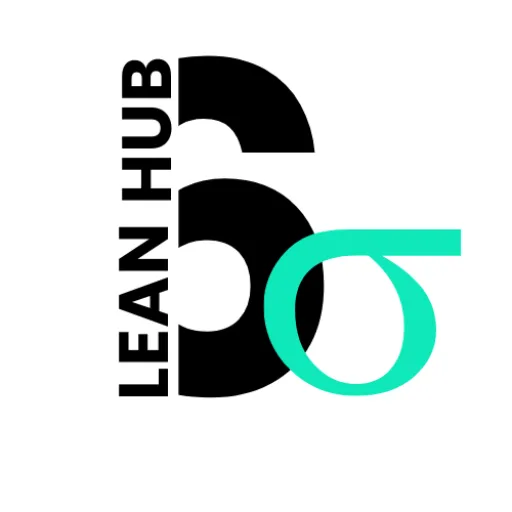Improving Efficiency with the 5S Method
The 5S method is a systematic approach to workplace organization and standardization that originated in Japan as part of the Toyota Production System. The term “5S” refers to five Japanese words that represent the steps of the process: Seiri (Sort), Seiton (Set in Order), Seiso (Shine), Seiketsu (Standardize), and Shitsuke (Sustain). Each of these steps plays a crucial role in creating an efficient, organized, and productive work environment.
The primary goal of the 5S method is to eliminate waste, improve productivity, and enhance safety by fostering a culture of continuous improvement. At its core, the 5S method emphasizes the importance of visual management and employee involvement. By engaging all team members in the process, organizations can cultivate a sense of ownership and responsibility for their workspace.
This participatory approach not only leads to better organization but also encourages employees to identify inefficiencies and suggest improvements. The 5S method is not merely a one-time initiative; it is a continuous journey that requires commitment and discipline from everyone involved.
Key Takeaways
- The 5S method is a systematic approach to workplace organization and standardization.
- Sorting involves removing unnecessary items from the workspace to improve efficiency and productivity.
- Setting in order focuses on arranging necessary items in a logical and accessible manner for easy retrieval.
- Shining emphasizes the importance of regular cleaning and maintenance to create a safe and pleasant work environment.
- Standardizing involves establishing consistent work practices and procedures to sustain the improvements made through the 5S method.
Sorting: Streamlining Your Workspace and Eliminating Clutter
The first step in the 5S method, Seiri or Sorting, focuses on identifying and separating necessary items from unnecessary ones within the workspace. This process involves evaluating tools, materials, and equipment to determine what is essential for daily operations and what can be discarded or stored away. By eliminating clutter, employees can create a more efficient work environment that minimizes distractions and enhances focus.
Sorting can be achieved through various techniques, such as the use of red tags to mark items that are not needed. These tags serve as visual cues, prompting team members to assess whether an item should be kept, relocated, or disposed of. For example, in a manufacturing setting, tools that are rarely used can be tagged and moved to a less accessible area, freeing up valuable workspace for frequently used equipment.
This not only streamlines operations but also reduces the time spent searching for tools and materials.
Setting in Order: Organizing Your Workspace for Maximum Efficiency
Once sorting is complete, the next step is Seiton or Setting in Order. This phase emphasizes organizing the remaining items in a manner that promotes efficiency and ease of access. The goal is to create a logical layout that allows employees to find what they need quickly and return items to their designated places after use.
Effective organization can significantly reduce wasted time and effort, leading to improved productivity. To achieve optimal organization, it is essential to consider the workflow of tasks performed in the workspace. For instance, in an assembly line, tools and materials should be arranged in the order they are used during production.
This might involve placing frequently used tools within arm’s reach while storing less frequently used items further away. Additionally, labeling storage areas and using color-coded systems can enhance visual management, making it easier for employees to locate items quickly. By creating an organized workspace, companies can foster a culture of efficiency that empowers employees to perform their tasks with greater ease.
Shining: Maintaining a Clean and Safe Work Environment
| Metrics | January | February | March |
|---|---|---|---|
| Number of cleaning staff | 10 | 10 | 11 |
| Number of safety incidents | 2 | 1 | 0 |
| Number of cleaning supplies used | 500 | 550 | 600 |
The third step in the 5S method is Seiso or Shining, which focuses on cleanliness and maintenance within the workplace. A clean environment is not only essential for safety but also contributes to employee morale and productivity. Regular cleaning routines help identify potential hazards, such as spills or equipment malfunctions, before they escalate into more significant issues.
Implementing a cleaning schedule that assigns specific responsibilities to team members can ensure that cleanliness is maintained consistently. For example, in a warehouse setting, employees might rotate weekly duties that include sweeping floors, wiping down surfaces, and inspecting equipment for wear and tear. This shared responsibility fosters accountability among team members while promoting a culture of cleanliness.
Moreover, a clean workspace can enhance the overall image of the organization, reflecting professionalism and attention to detail.
Standardizing: Establishing Consistent Work Practices and Procedures
The fourth step in the 5S method is Seiketsu or Standardizing. This phase involves creating standardized procedures and practices that ensure consistency across the organization. By establishing clear guidelines for sorting, organizing, and cleaning, companies can maintain the improvements achieved through the first three steps of the 5S process.
Standardization can take various forms, including written procedures, checklists, and visual aids such as posters or diagrams. For instance, a manufacturing facility might develop standard operating procedures (SOPs) that outline how tools should be stored, cleaned, and maintained. These SOPs serve as reference points for employees, ensuring that everyone follows the same practices regardless of their experience level.
Additionally, regular training sessions can reinforce these standards and provide opportunities for employees to share feedback on potential improvements.
Sustaining: Ensuring Long-Term Success with the 5S Method
Commitment to Sustaining
Sustaining the 5S process requires ongoing commitment from all employees and management alike. It involves fostering a culture of discipline where adherence to established standards becomes second nature.
Regular Audits and Assessments
To sustain improvements, organizations can implement regular audits or assessments to evaluate compliance with 5S practices. These audits can help identify areas for improvement and reinforce accountability among team members.
Recognition and Rewards
Recognizing and rewarding employees who consistently adhere to 5S principles can motivate others to follow suit. By embedding 5S into the organizational culture, companies can ensure that workplace organization remains a priority even as new challenges arise.
Benefits of Implementing the 5S Method in Your Workplace
Implementing the 5S method offers numerous benefits that extend beyond mere organization. One of the most significant advantages is increased productivity. By streamlining workflows and reducing clutter, employees can focus on their tasks without unnecessary distractions.
This heightened focus often leads to improved output quality and faster turnaround times. Moreover, the 5S method enhances safety within the workplace. A clean and organized environment reduces the risk of accidents caused by tripping over clutter or misplacing tools.
Additionally, regular cleaning routines help identify potential hazards before they become serious issues. As a result, organizations may experience fewer workplace injuries and associated costs.
Another notable benefit is improved employee morale.
When employees work in a clean and organized environment, they are more likely to feel valued and motivated. The participatory nature of the 5S method fosters a sense of ownership among team members, encouraging them to take pride in their workspace. This positive atmosphere can lead to higher job satisfaction and lower turnover rates.
Tips for Successfully Implementing the 5S Method in Your Organization
Successfully implementing the 5S method requires careful planning and commitment from all levels of the organization. One effective strategy is to start small by piloting the process in one department or area before expanding it company-wide. This allows teams to refine their approach based on real-world experiences and challenges encountered during implementation.
Engaging employees from the outset is crucial for success. Involve team members in discussions about how to best implement each step of the 5S process within their specific work areas. Their insights can provide valuable perspectives on potential challenges and solutions that management may not have considered.
Regular training sessions are also essential for reinforcing 5S principles and ensuring that all employees understand their roles within the process. Providing ongoing support through resources such as visual aids or checklists can help maintain momentum as teams work toward sustaining improvements. Finally, leadership commitment plays a vital role in successful implementation.
Management should actively participate in 5S initiatives by modeling desired behaviors and recognizing employee contributions to maintaining an organized workplace. By fostering a culture of continuous improvement rooted in the principles of 5S, organizations can achieve lasting success in their efforts to enhance efficiency and productivity.
FAQs
What is the 5S method?
The 5S method is a systematic approach to workplace organization and standardization. It consists of five steps: Sort, Set in Order, Shine, Standardize, and Sustain.
What are the benefits of implementing the 5S method?
Implementing the 5S method can lead to improved efficiency, safety, and productivity in the workplace. It also helps to reduce waste, improve quality, and create a more organized and visually appealing work environment.
How does the 5S method improve workplace organization?
The 5S method helps to eliminate clutter, streamline processes, and create a standardized way of working. It also involves regular cleaning and maintenance to ensure that the workplace remains organized and efficient.
Is the 5S method suitable for all types of industries?
Yes, the 5S method can be applied to various industries including manufacturing, healthcare, offices, and service sectors. It is a versatile approach that can be tailored to suit the specific needs of different workplaces.
What are the key principles of the 5S method?
The key principles of the 5S method include sorting and removing unnecessary items, organizing the remaining items in a logical and efficient manner, cleaning and maintaining the workplace, standardizing processes and procedures, and sustaining the improvements through regular audits and training.






